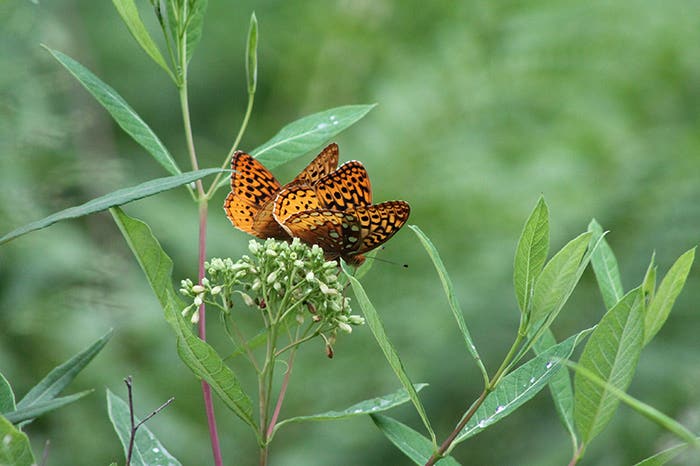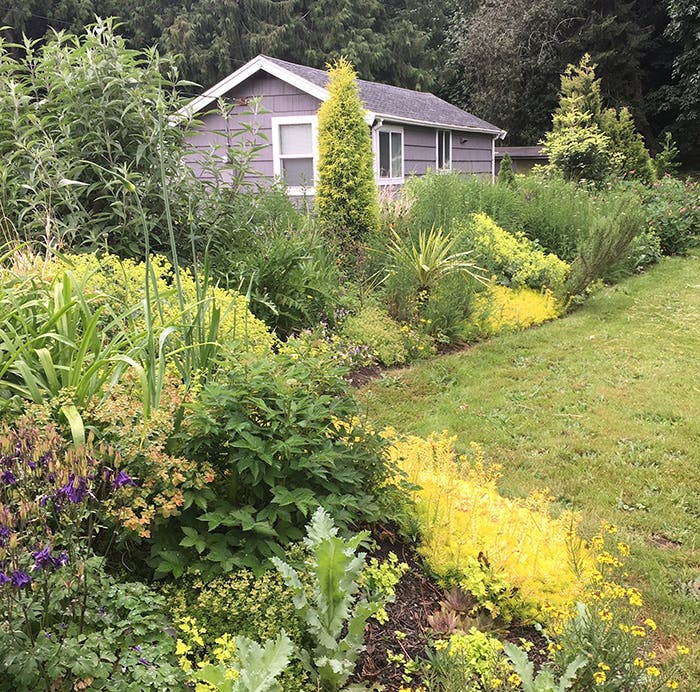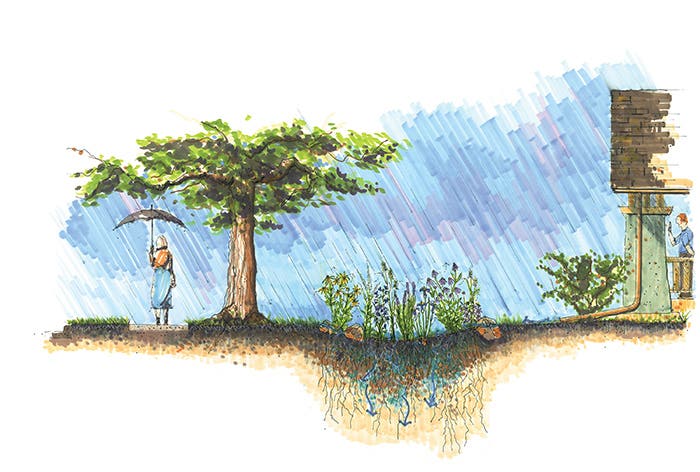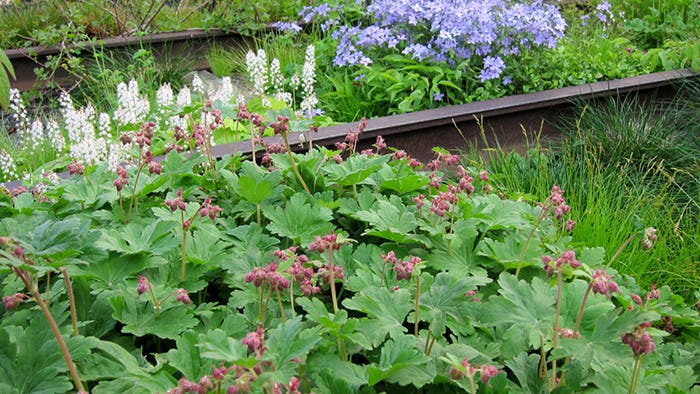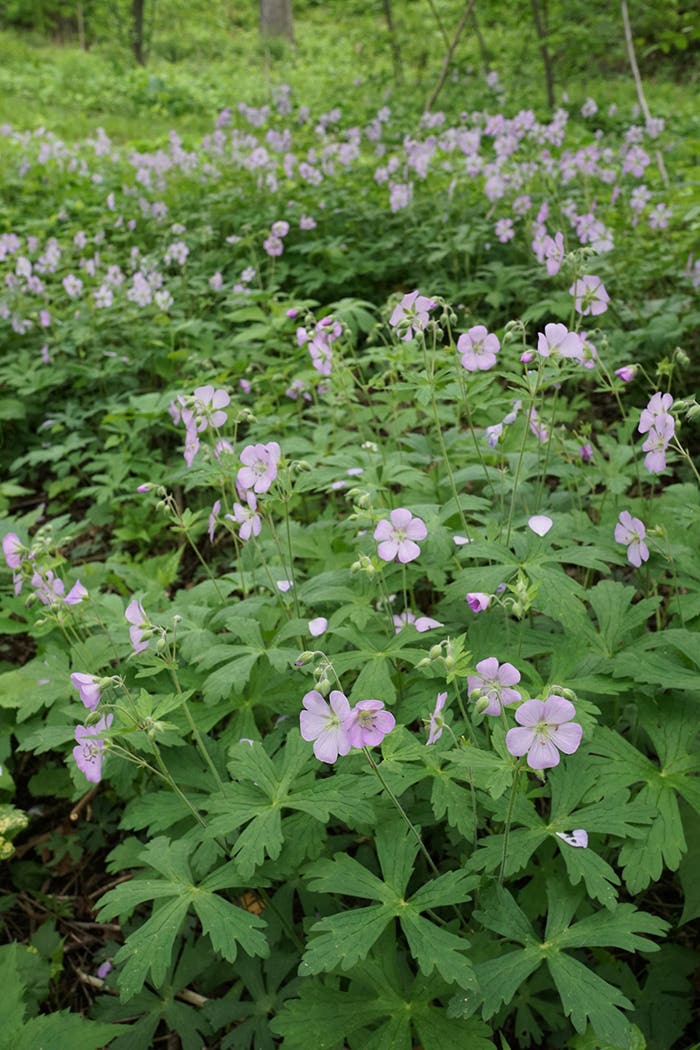Pro Garden Design Tip: How to Use the Power of the Triangle
One of geometry’s most powerful illusions in the garden is created by the use of triangle shapes. Placing plants with similar traits in a triangular pattern is a simple way to tap into this design element.
The Power of the Triangle
Create the illusion of depth with color, form and shape
by Rebecca Sweet
These garden design tips come from APLD garden designer Rebecca Sweet of Harmony in the Garden. The photo below is the full view of the garden area she is discussing. Scroll down to see detail photos of how the design works.
One of geometry’s most powerful illusions in the garden is created by the use of triangle shapes. Placing plants with similar traits in a triangular pattern, whether close together or farther apart, creates the illusion of depth. The farther apart each plant in the triangular pattern is, the greater the perceived depth. The plants don’t necessarily need to be the same species, but they should share similar characteristics (e.g., color, texture or form). Using different, yet similar, traits not only weaves a harmonious thread throughout your garden’s tapestry, but the increased plant palette keeps your garden interesting and diverse.
#1 Even though each plant has a different form (e.g., the round pomegranate, the mounding hakone grass and vase-shaped Chinese pistache tree), they share the same vibrant gold colors.
#2 Try elevating one of the three plants in the triangle to make the space appear deeper yet, as the eye will not only travel horizontally but vertically, as well.
#3 Use fall’s fleeting colors as another opportunity to add seasonal harmony in your garden. Though the colors may be temporary, when creatively used, they can make a powerful impact in the garden.
Rebecca Sweet is an APLD garden designer, author and speaker. For many years she wrote a design column for Horticulture magazine named after her business: Harmony in the Garden. This article originally appeared in the September/October 2015 issue of Horticulture. You can subscribe to Horticulture and read more smart articles just like this one.


